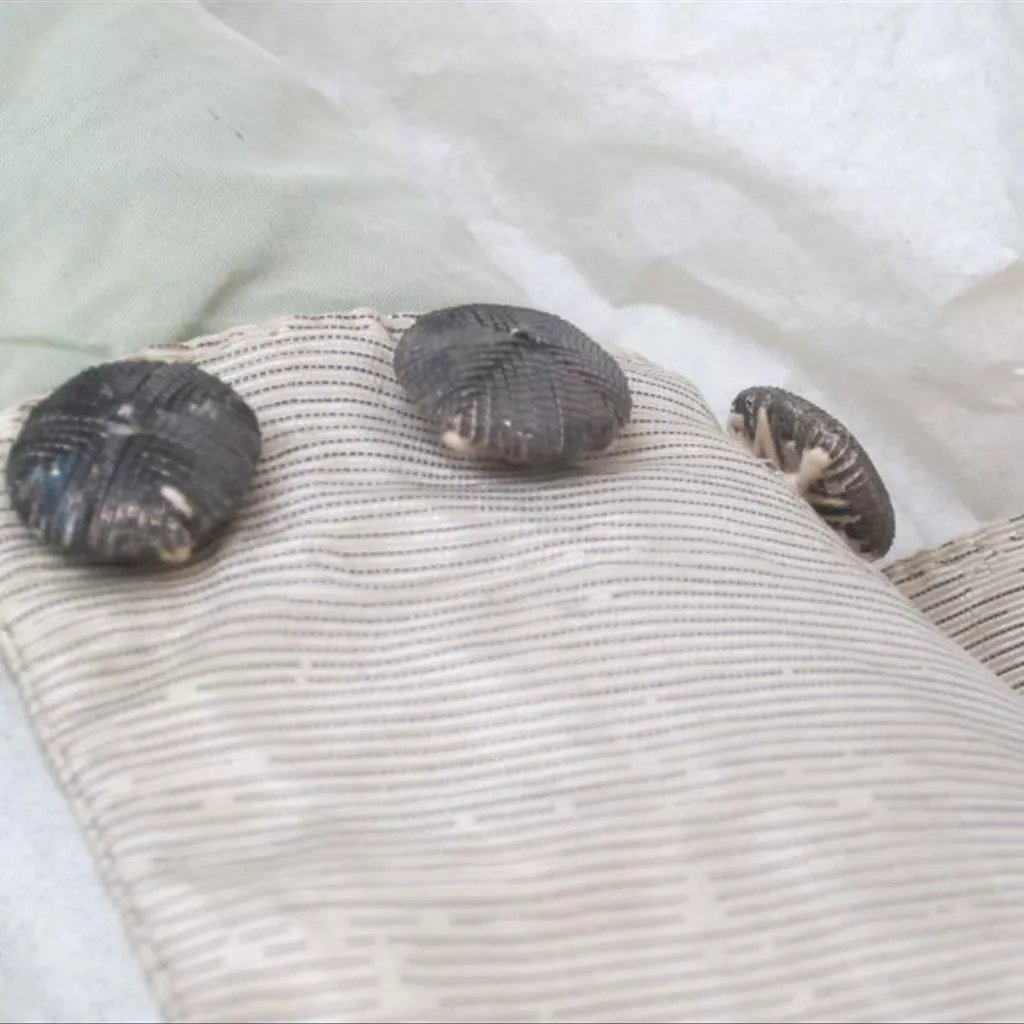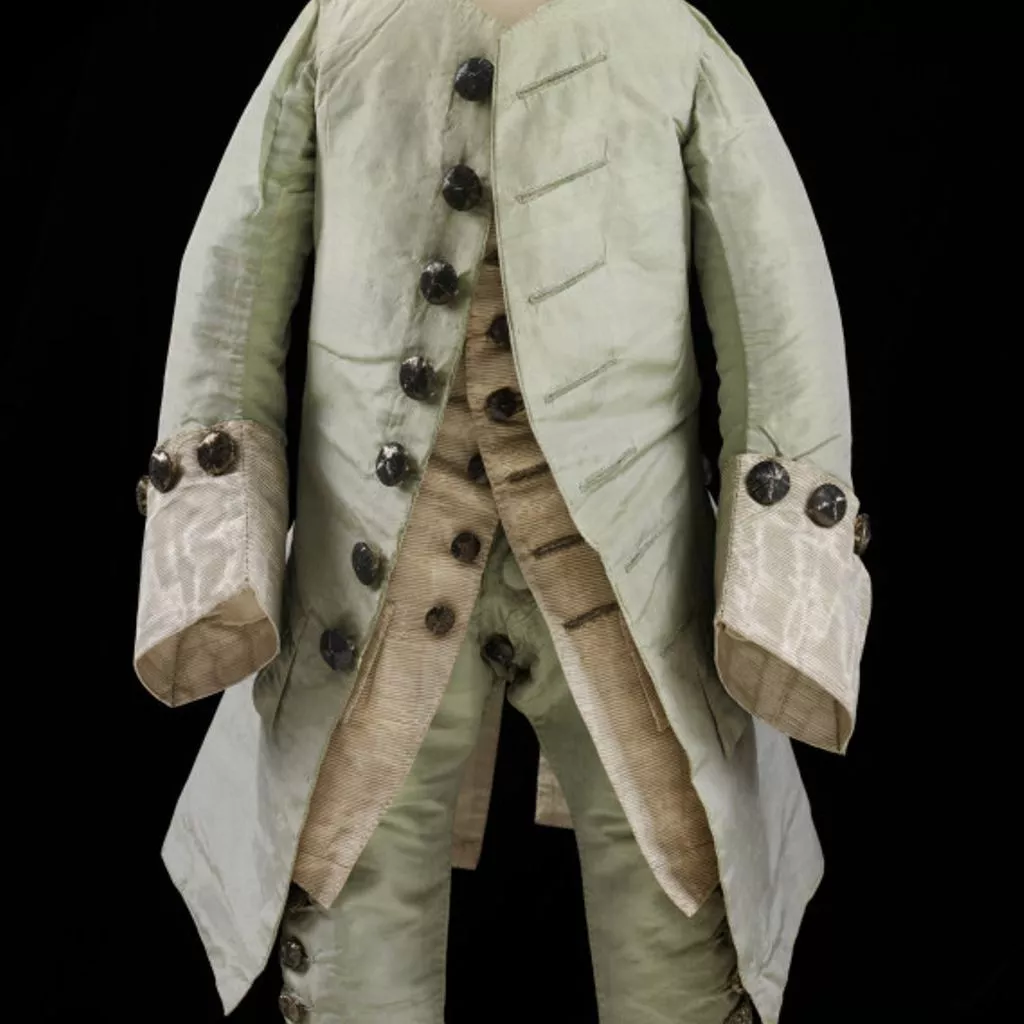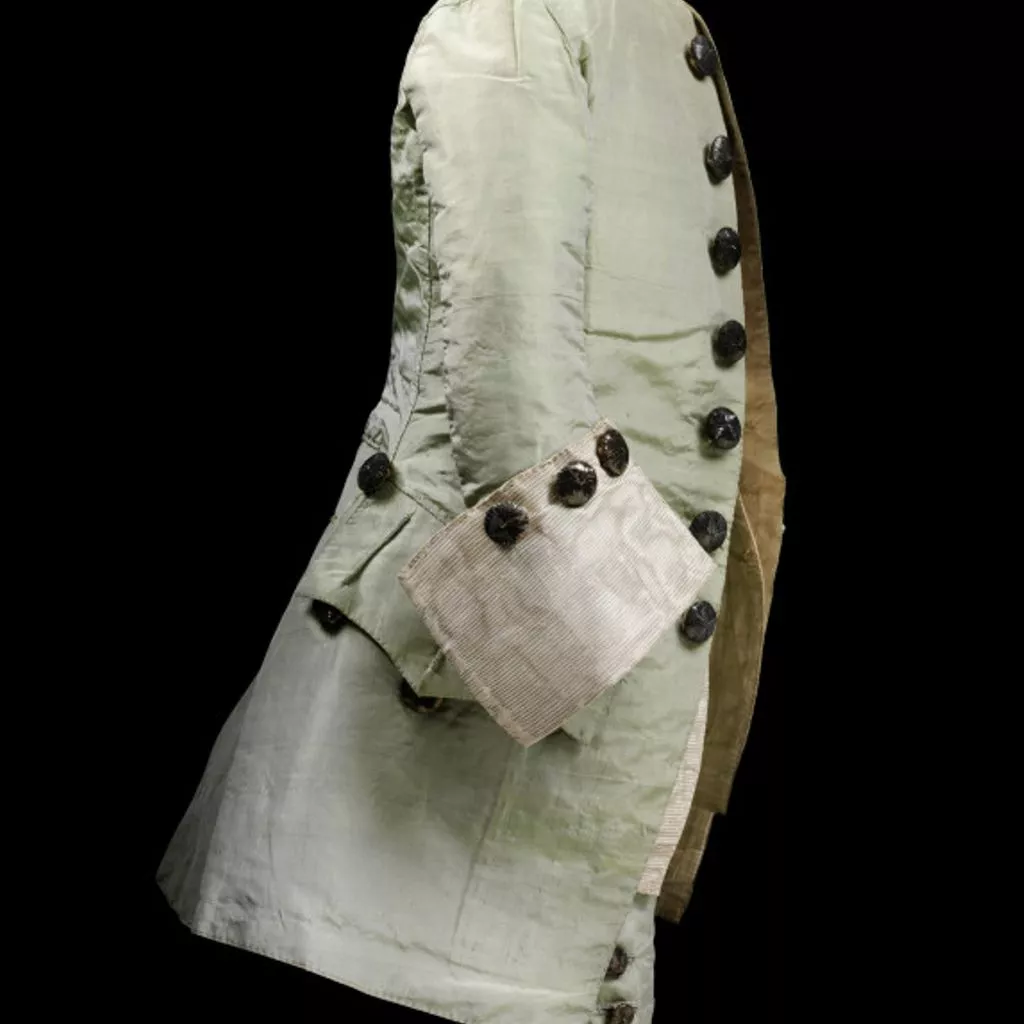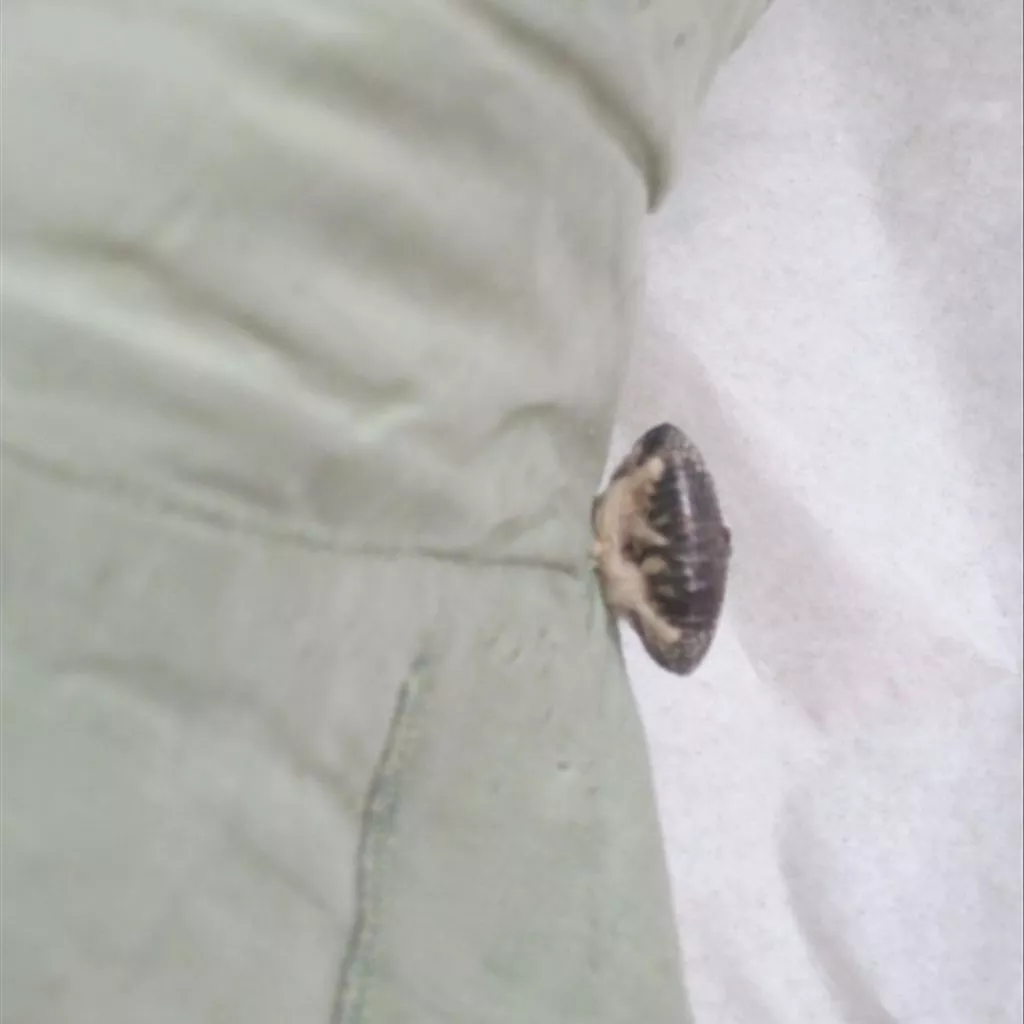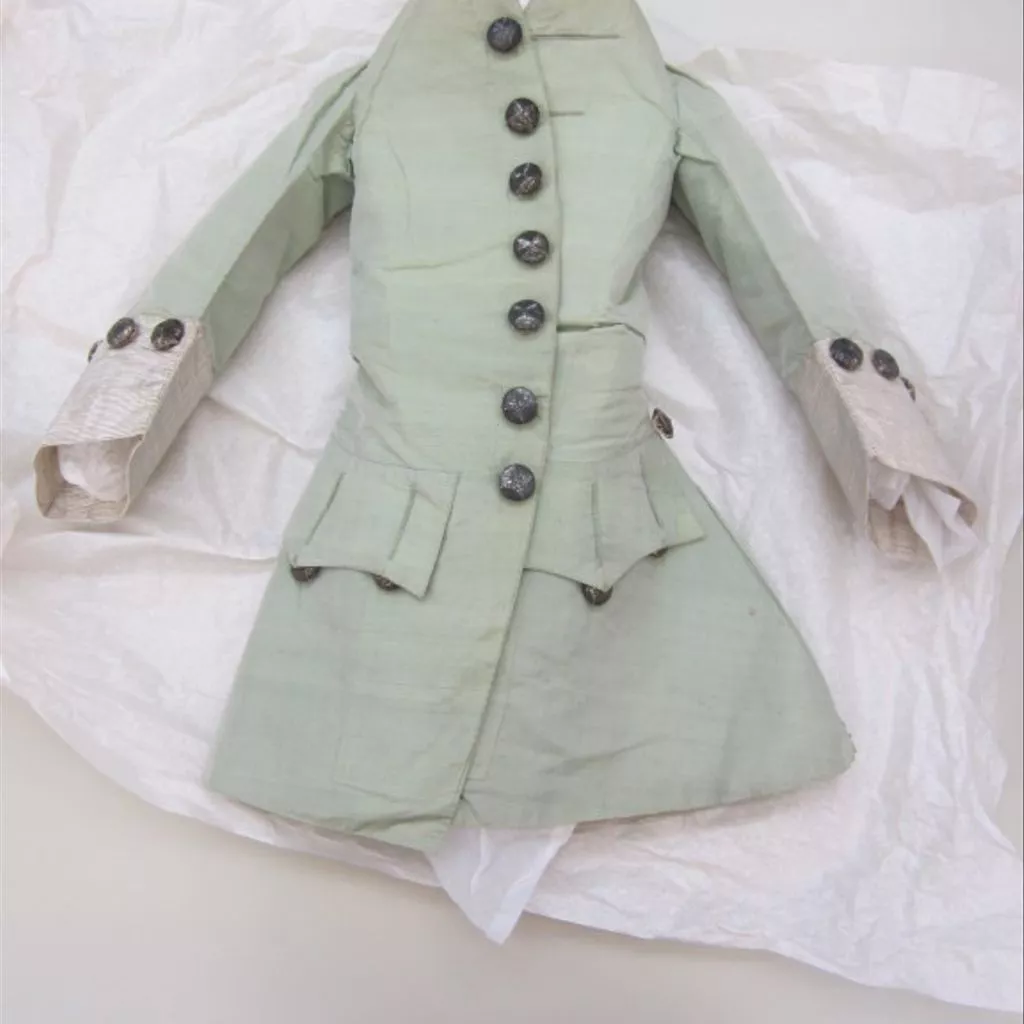Description
Unique
Probably made as a model by a tailor to sell his wares, the suit is too small to be for a boy, and probably too luxurious to be an apprentice's masterpiece. The colour of the silks and their use of metal threads suggest that the suit was echoing men’s court attire which was made of different qualities of silk, and made use of ostentatious decoration. The collar. sleeves, cuffs and pockets of the coat are comparable with the French suits that survive in the Royal Armoury in Stockholm, falling in style between the wedding suit that Gustavus III ordered from Paris in 1766, the suit he wore when travelling incognito as Count of Gotland to Russia in 1777. The latter seems very close to this suit in that the coat and breeches are a similar colour of green (celadon) and the waistcoat is made of a cream coloured ribbed silk.
From the late 17th century, men wore a three-piece suit for formal dress, comprising a coat (in French, justaucorpsor in later 18th century habit), waistcoat (veste) and breeches (culottes). In France, the whole ensemble was known as the habit à la française. Both England and France had a good reputation for men’s tailoring in the 18th century. In France, this skill was learned through a seven-year apprenticeship, at the end of which the apprentice had to produce a ‘masterpiece’ which proved his competence in the necessary skills of his trade.
This suit is cut and constructed in exactly the same way as a full-sized adult suit. It is however too small to fit a child’s body, which suggests that it was made half-size on purpose so that a tailor could demonstrate his skills and show the model to a client. A miniature suit would presumably have been easier to circulate than a full-sized model and would have been less costly in materials: silks and buttons of this type were expensive commodities in this period.
The coat and breeches are made of matching light green silk taffeta, the cuffs of the coat and the waistcoat fronts of cream moiré silk with a silver thread woven in. The buttons on the coat cuffs, down the front of the coat and waistcoat, at the top and bottom of the coat’s side pleats, and on the outer opening of the legs of the breeches are made of silver thread. The linings are of lightweight plain woven cream silk taffeta or glazed linen.
Miniature suit
About 1760–65
This suit is cut and constructed in exactly the same way as a full-sized adult suit, but is half-size – too small even to fit a child’s body. A tailor probably made it to advertise his skills to prospective clients. It would have been easier to transport than a full-sized model and less costly in materials.
Possibly France or England
Silk and silver; silver buttons and braid
Given by Miss H. Prescott-Decie
[09/12/2015]
Miniature three-piece suit, consisting of a coat, waistcoat and breeches, about 1760-65.









